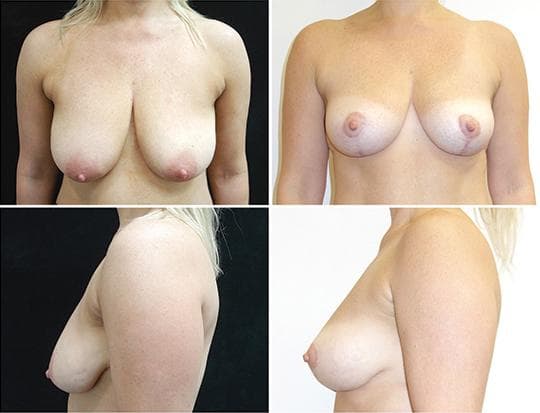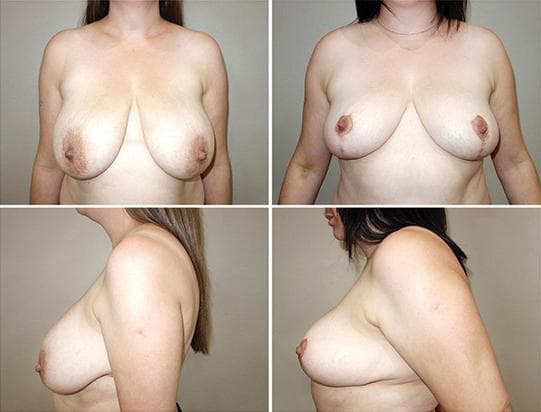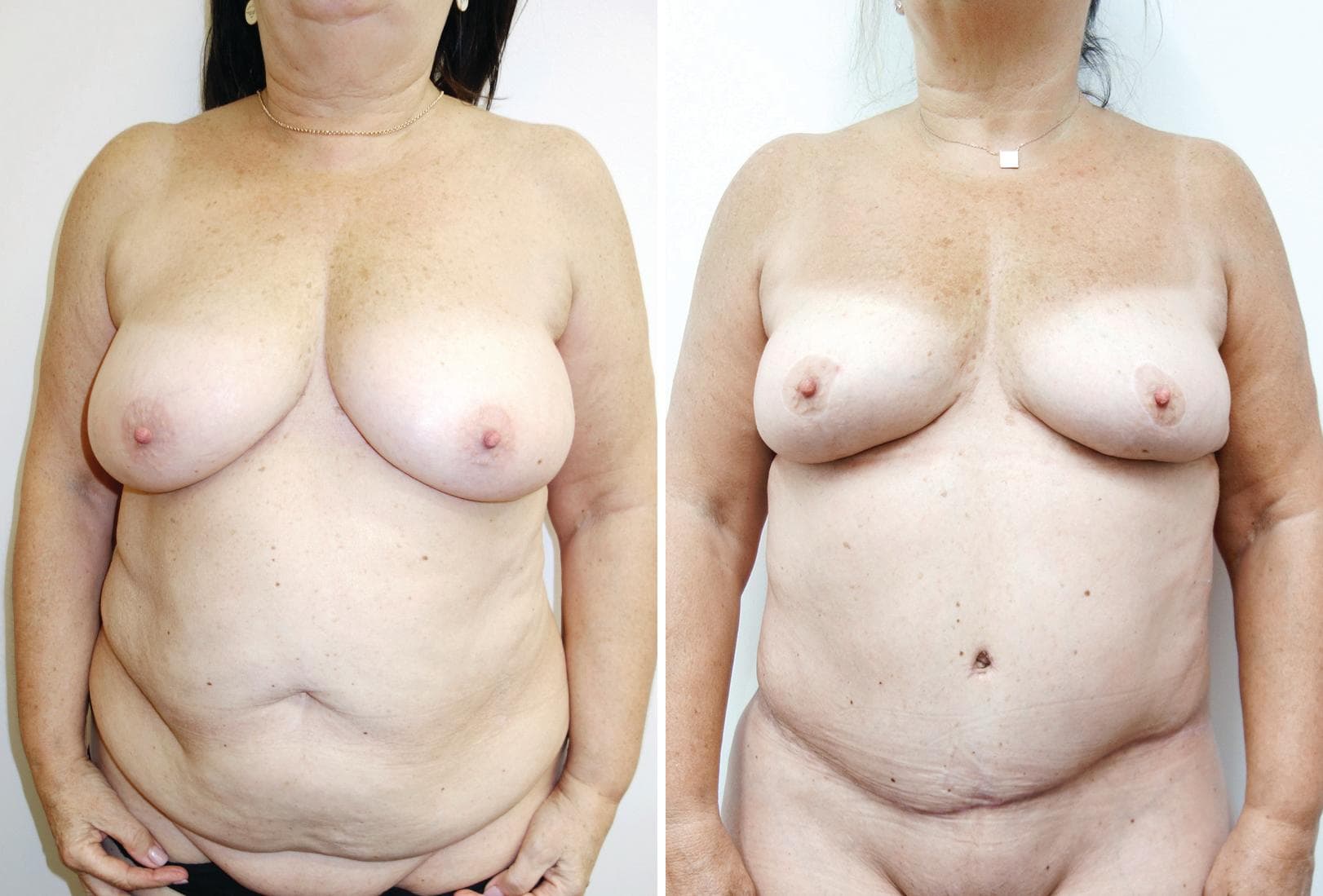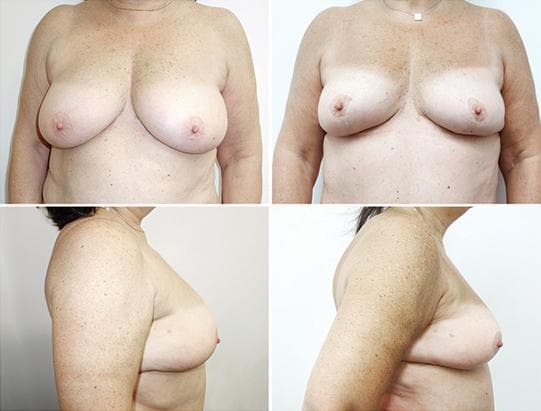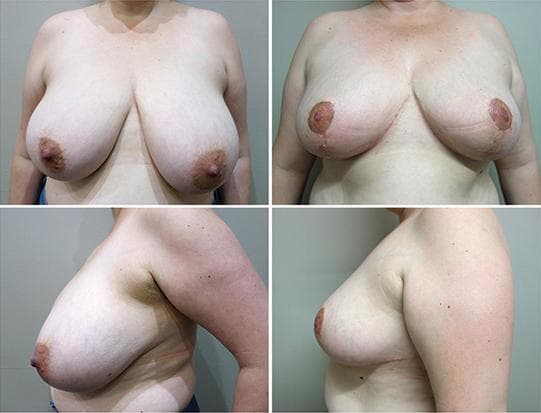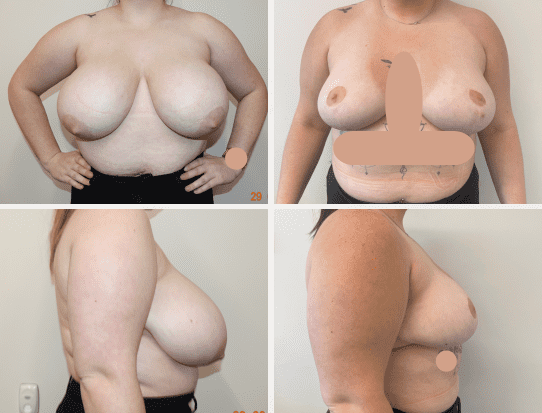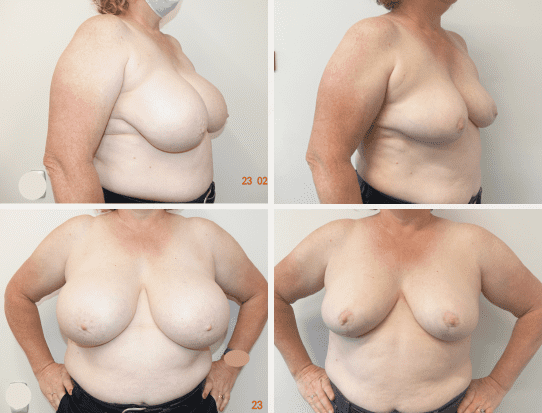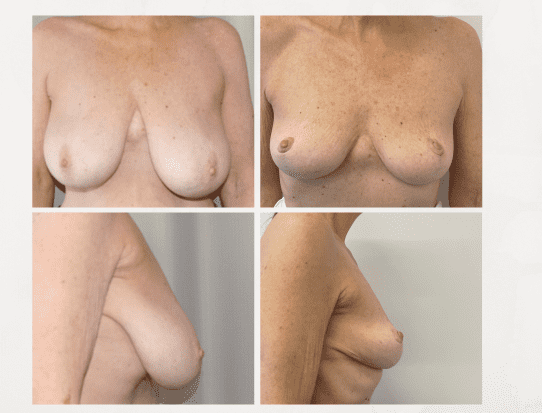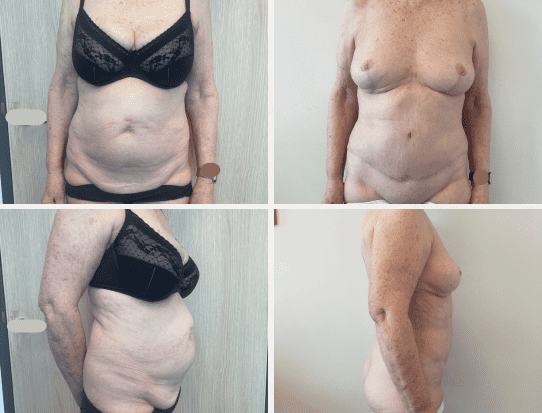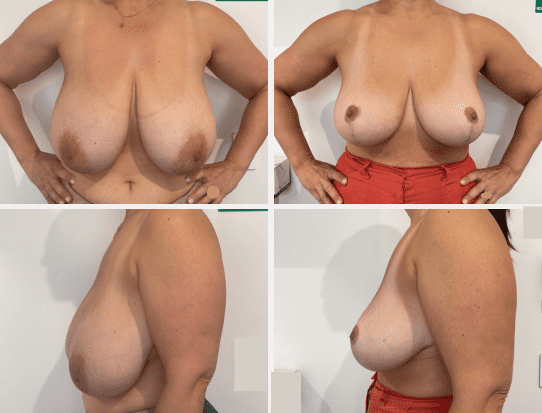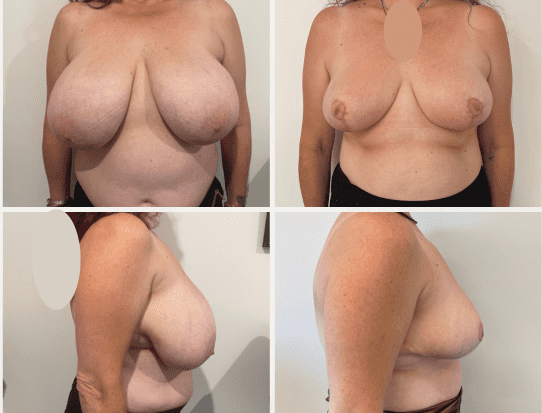Breast Reduction Procedure Details
Breast Reduction surgery is performed under general anaesthesia. A nerve block (PECS II block) using local anaesthetic medication is also performed by your Specialist Anaesthetist before the operation starts to provide additional pain relief both during and after your operation.
Dr Wyten’s technique for this surgery involves removing excessive breast tissue and excess skin, changing the shape of the breast, and altering the position of the nipple. If necessary, liposuction lateral to the breasts may also be performed to modify the overall shape.
This procedure typically takes approximately 3 hours to perform in the operating theatre, and an overnight stay in the hospital is often required.
Breast Reduction Modification Surgery
Breast reduction surgery alters the size and shape of your breasts and can offer the following modifications:
- Reduced breast size
- Change breast shape
- Adjust the symmetry of breasts
- Alter the position of the nipple
- Areolar size can be reduced
- Reduced back and neck strain
- Reduce the chance of skin irritation in the breast folds
Am I a good candidate for Breast Reduction surgery?
It is important to have realistic expectations about what can be achieved with this surgical procedure. You should also consider your natural breast size and shape and what will suit your overall body physique.
It is also important to be in good physical and mental health, and to be a non-smoker to reduce your risk of complications during and after surgery. If you are considering having breast reduction surgery, it is now an Australian requirement that you have a consultation with a General Practitioner (GP) or other specialist medical practitioner first to discuss your health and for an appropriate referral to a surgeon.
All breast patients require screening before surgery, which may involve an ultrasound, mammogram and/or MRI depending on a patient’s age and risk of future breast cancer.
What can I expect during recovery following Breast Reduction surgery?
It is important to follow the instructions given during your recovery, including when you can resume exercise. Following breast reduction surgery, it is common to require 3 weeks off work. You may require more time off work depending on the type of work you do. This will be discussed further with Dr Wyten during your consultation.
It is typical to have some discomfort after breast reduction surgery. You will be given instructions after your surgery on how to manage this in the first couple of weeks after surgery. You will also need to wear supportive undergarments, and Dr Wyten’s preferred supportive post-surgical bras will be provided after your surgery. You may wish to purchase some additional post-surgical bras for your recovery.
Risks of breast reduction surgery
All surgeries have risks, including scarring, bleeding blood clots (deep vein thromboses and pulmonary emboli), and infection. There are also risks associated with a general anaesthetic.
Potential risks specific to this surgery will be discussed with you by Dr Wyten during your consultation. Written information will also be provided for you to read before you proceed with surgery. Some risks associated with this procedure include:
- Breast asymmetry
- Loss of sensation
- Nipple inversion
- Loss of nipple and areola tissue
- Reduced ability to breastfeed
- Delayed/poor wound healing
- Contour irregularities
If you experience any unusual pain, swelling or bleeding after surgery, please seek help immediately.
Consider choosing an experienced Specialist Plastic Surgeon, such as Dr Wyten when considering this type of surgery.
Understanding Breast Reduction Melbourne: Benefits and Considerations
What is Breast Reduction Surgery?
- Breast Reduction surgery, also known as Reduction Mammoplasty, is a surgical procedure that aims to reduce the size and weight of overly large breasts.
- The goal of breast reduction surgery is to improve the overall appearance and comfort of the breasts.
- Breast reduction surgery can help alleviate physical discomfort, skin irritation, and shoulder pain associated with large breasts.
Optimal outcomes of Breast Reduction
- Relief from physical discomfort and pain caused by large breasts
- Alter body proportions and overall appearance
- Ability to engage in physical activities with less discomfort or restriction
- Reduced skin irritation and rashes under the breasts
Are You a Suitable Candidate?
- Determining if you are a suitable candidate for Breast Reduction surgery involves a comprehensive evaluation with a qualified Specialist Plastic Surgeon.
- Factors that may affect suitability for breast reduction surgery include overall health, breast size and shape, skin elasticity, and any specific issues you may be experiencing.
- Non-smokers in good overall health with realistic expectations about the results of the procedure are ideal candidates.
Breast Reduction Procedure
- The breast reduction procedure typically takes 2-3 hours to complete, depending on the individual’s specific requirements.
- The quantity of tissue removed can vary widely, from as little as 100 grams to over 5 kilograms.
- Breast reduction surgery often includes a breast lift (mastopexy) to ensure the breasts are not only smaller but also well-shaped and lifted.
Surgical Techniques
- There are three widely utilised surgical techniques for breast reduction, including the anchor incision, peri-areolar incision, and LeJour incision or lollipop technique.
- The choice of technique depends on the expertise of the surgeon and your specific needs.
- A qualified Specialist Plastic Surgeon will discuss the optimal
Preparing for Breast Reduction
- Preparing for breast reduction surgery involves a thorough evaluation and discussion with your surgeon.
- You will need to fast prior to your surgery, usually from midnight the night prior.
- Admission paperwork will be provided 1-2 weeks prior to your operation.
The Breast Reduction Process
Reshaping of the Breast and Surrounding Areas
- During a Breast Reduction procedure, your surgeon may also use liposuction to reshape the breast and surrounding areas to achieve the desired contouring.
- This can help improve the overall appearance of the breasts and surrounding areas.
Nipple and Areola Reshaping
- During Reduction Mammoplasty, your surgeon may also reshape/resize your areola/nipples if they have become stretched or elongated.
- This can help alter
Recovery and Post-Operative Care
- The healing process after a Breast Reduction surgery can vary from patient to patient, with individual recovery times ranging from several weeks to a few months.
- It is essential to follow your surgeon’s postoperative instructions regarding exercise and physical activity.
- A support person can assist with daily tasks, such as childcare, household chores, and errands, to aid in your recovery.
Exercise and Physical Activity
- Following a Breast Reduction procedure, it’s essential to adhere to the post-surgical care instructions provided, particularly when it comes to resuming physical activities and exercise.
- Initially, it’s essential to avoid any vigorous activities or exercises that could jeopardise the recovery.
- Prioritising rest and avoiding any activities that could exert excessive strain on the body is crucial for at least six weeks post-surgery.
Minimising Scars
- It is important to remember that all surgical procedures leave scars.
- A qualified Plastic Surgeon will take measures to minimise the visibility of scars, including using techniques such as scars within the areola or breast crease.
Cost and Insurance
- The cost of breast reduction surgery can vary depending on several factors, including the surgeon’s experience and expertise, the complexity of the procedure, the surgical facility, and any additional treatments or services included.
- Some types of Breast Reduction surgery may be eligible for a rebate from Medicare and Private Health Insurance.
Risks and Complications
- Breast Reduction surgery, like any surgical procedure, carries certain risks and potential complications.
- Some possible risks and complications of breast reduction surgery include asymmetry, scarring, changes in nipple sensation, and infection.
Choosing a Surgeon
- Choosing a qualified and experienced Specialist Plastic Surgeon is essential when considering a breast reduction procedure.
- Look for a surgeon who is a Specialist Plastic Surgeon and has experience in performing breast reduction surgery.
- A qualified Plastic Surgeon will discuss your options and provide personalised advice during your breast reduction consultation.
Outcomes and Recovery Following Breast Reduction Surgery
- Breast reduction surgery can provide a variety of modifications including improved body contour, and reduced back and shoulder pain.
- Initial results are felt soon after but will continue to improve as swelling subsides over several months.
- Scarring is normal but a qualified Specialist Plastic Surgeon will aim to minimise its visibility using various techniques.
